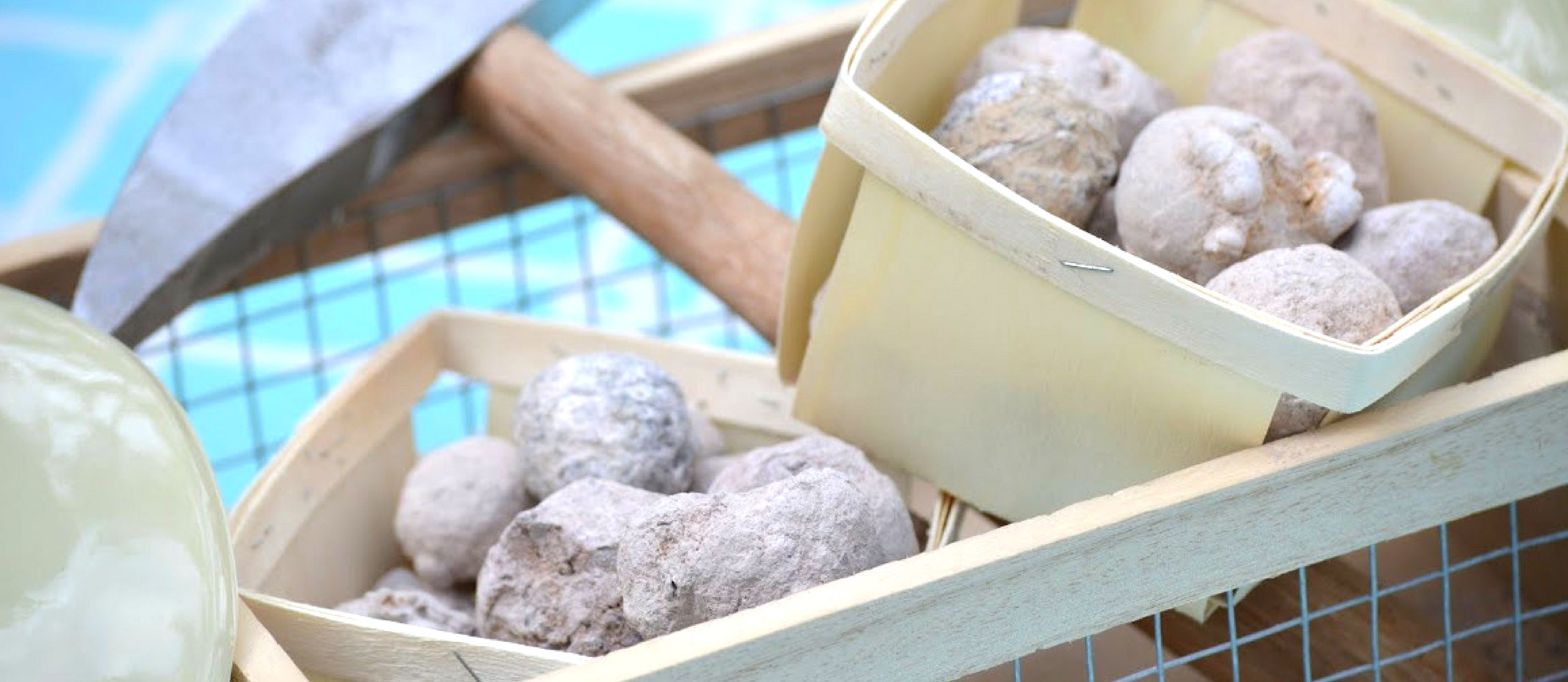We are just starting our unit on geology, so my students will be rolling up their sleeves and taking a closer look at rocks. I love field trips and offering experiences that help students create a firm understanding of what they are reading about in those dusty science books. But often times, teachers are limited by school budgets, geographical location or other restraints. So if you can’t bring the kids to the mountains to explore, why not bring the mountain to the kids? I decided to create my own rock mining exploration station; a place where students could mine for rocks and create a better understanding of what we can learn from the rocks around us.
An exploration station like this can be as simple or as fancy as you like. Since my goal was to create an on-campus field trip, I wanted it to be an experience the students would remember. I had access to some extra scrap wood so I created my own dig table. However, you could simply use a small plastic pool or plastic container. I also set up a dig area complete with teepee and water tower to set the scene for my little explorers. The DIY teepee really helped to set the stage! It was the first thing they wanted to check out.
We needed a water source so I used an old planter that held water and attached a nozzle to it. Using scrap pieces of wood I created a base stand. The metal pail below collects the water so we can dump it back into the "water tower" for more mining fun! To create the sifter trays, I used the wood trays and chiseled out the bottom. It is a thin chip wood so once scored, it punches out nicely. I then cut a small piece of screen and cut it to match the size of the wood tray. I just stapled it to the underside of the tray. I created 12 of these so the students could mine in shifts. This helped to ensure not too many kids were digging all at once.
Now it's time to fill your table or tub with some dirt and rocks. I ordered some rocks from a gem mine online. Being from Florida, we don't have access to much more than sand. If you are fortunate enough to live in a part of the country that has access to unique stones and crystals you could use local resources.
To help spread out the purchased rocks I also used some white stone gravel and spray painted it gold. The students thought that this was fun to find and they all tried to see who collected the most gold at the end of the activity.
Students took turns sifting through small scoops of dirt at the dig tabl. It was so fun to watch them ooh and ahh over their new-found treasures!
Once they sifted through their scoop, they took it to the wash bin to clean their rocks and examine what they found. We had to be very careful to only get the screen portion wet, not the wood. The trays do not hold up to being submersed, so it works best to keep them dry. The handles made it easy for their little hands to grip.
Once cleaned, my students used their rock ID cards to identify their haul. As our rock dig came to a close, we didn't want the rock exploration to end so we decided to explore our geodes next. The students examined the small dull rocks and speculated about what could be inside. We discussed what types of rocks we found in the dig and how they might look different if found in nature.
The students donned their safety glasses and used a small hammer to break open their geodes. This is best done one at a time with a parent volunteer to help, the geodes can be very stubborn to break open. But once they break they are pretty cool inside! Each one is a bit different; some with tubes others with a more crystal like structure.
Make Your Own Geodes As my students learned a little more about what a crystal is and how they are formed, we decided to try our hands at creating some of our very own crystals. Tie a string around a geode then suspend it from a pencil (so it will freely hang inside the mason jar) set pencil atop mason jar. In a microwave-safe measuring cup, boil 2 cups of water then add food coloring and 1/2 cup borax. Stirring until completely dissolved. Pour into the mason jar and set aside undisturbed for students to watch over two to three days. After a few hours you will see crystals start to grow.
The Science Behind the Crystals The heated water molecules move farther apart, making room for more of the borax crystals to dissolve. When no more of the solution can be dissolved, you have reached saturation. As this solution cools, the water molecules move closer together again creating the crystals you see. The final result is your very own crystal geode.
This was a class favorite! The students had a great time observing the crystals and watching them grow. All of these hands-on activities were a great way to introduce and create a deeper connection and understanding of geology. So before you introduce the rock cycle and start discussing those metamorphic changes that helped to create so many of our geological features, have your kids roll up their sleeves and do some exploring of their own!

